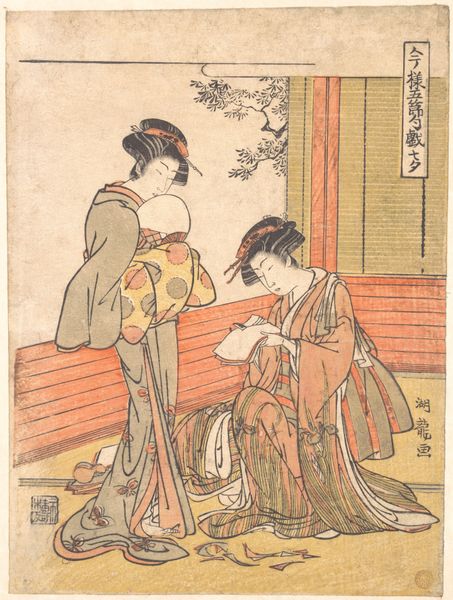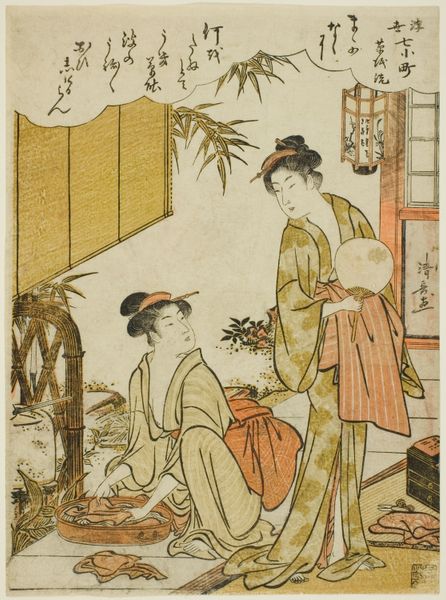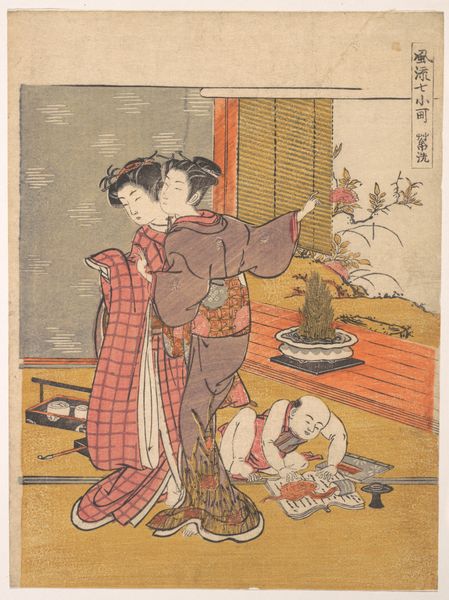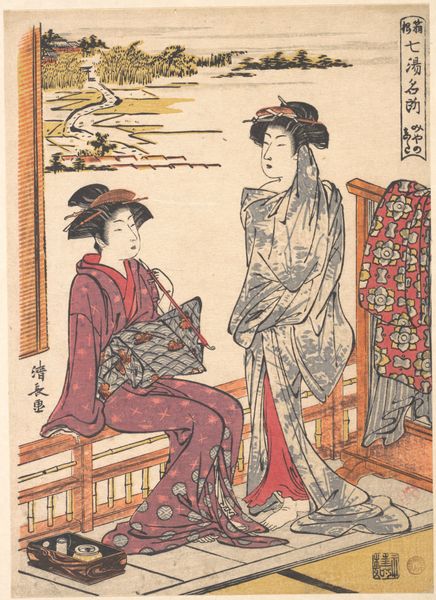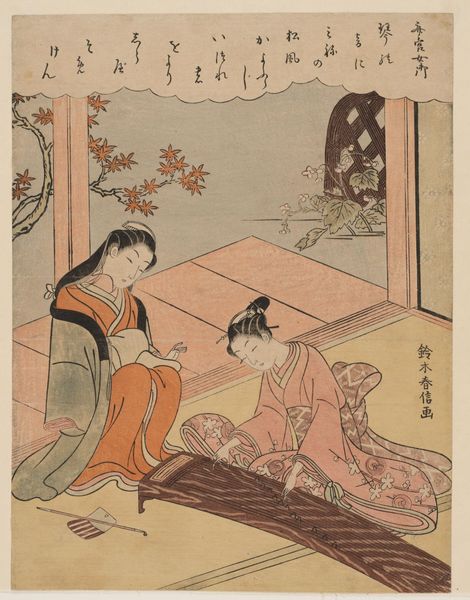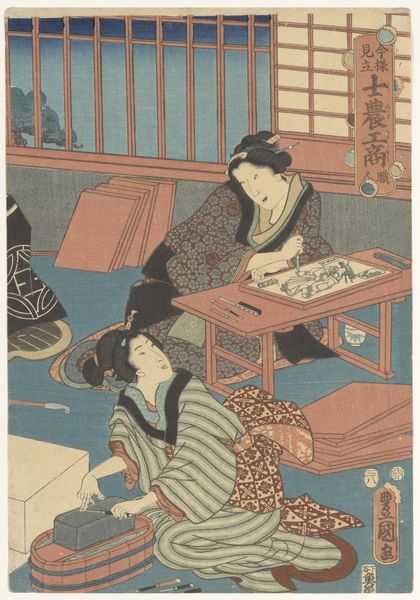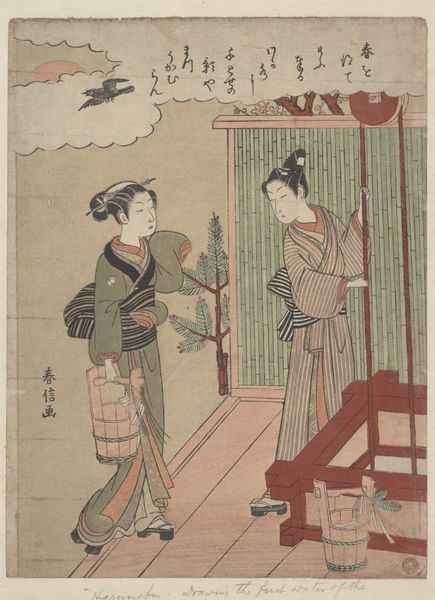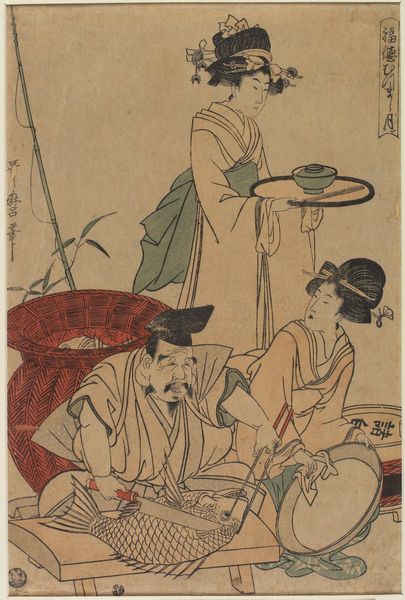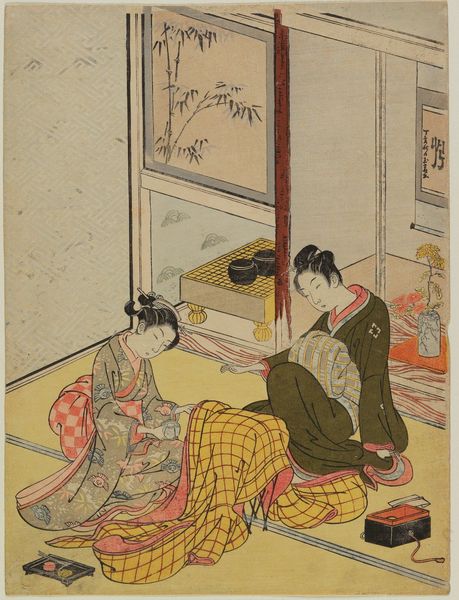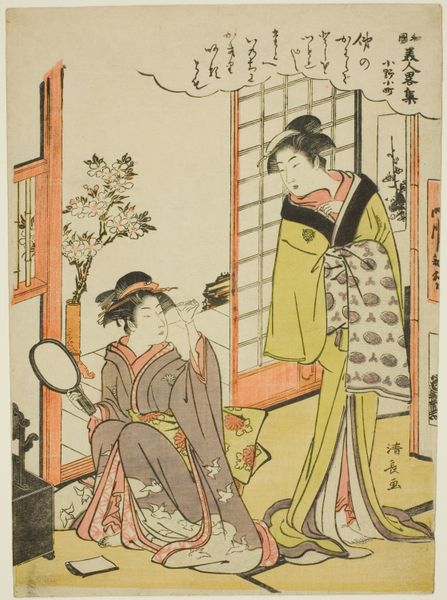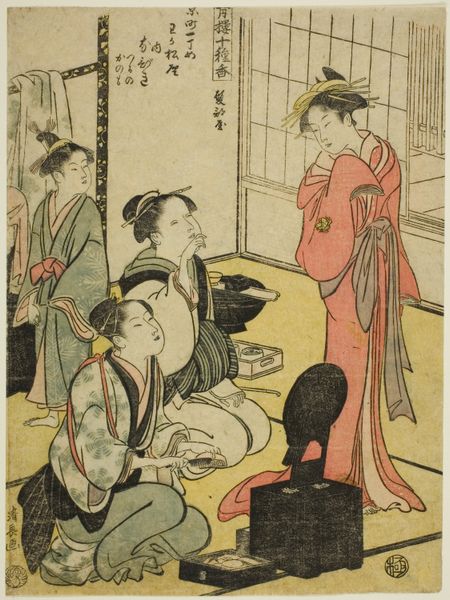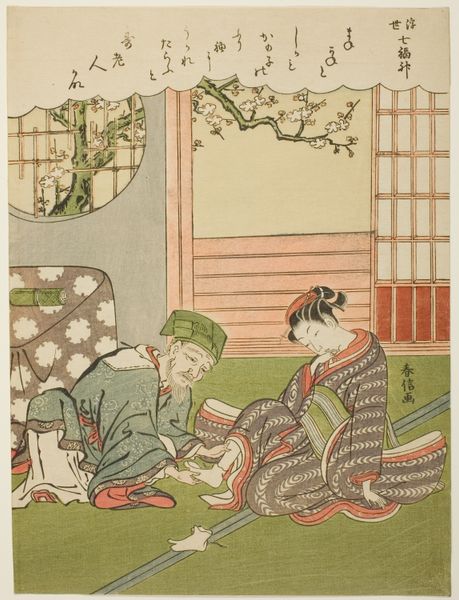
The Artisan (Ko) from the series "Beauties Illustrating the Four Social Classes (Adesugata shi no ko sho)" c. 1779
0:00
0:00
#
portrait
# print
#
asian-art
#
ukiyo-e
#
genre-painting
Dimensions: 20.8 × 14.9 cm
Copyright: Public Domain
Editor: We're looking at "The Artisan (Ko)" by Torii Kiyonaga, a print from around 1779 currently residing at the Art Institute of Chicago. There's an interesting stillness here, a quiet focus on everyday life. What strikes you about it? Curator: What stands out for me is the work's commentary on the social hierarchy of Edo-period Japan. Kiyonaga, through the ukiyo-e tradition, wasn't simply depicting pretty faces; he was actively participating in a dialogue about class and labor. The "Artisan" here represents one of the four social classes. Consider the setting. How does the artist use interior space and daily life to reflect societal structures? Editor: That's fascinating! I hadn't considered the social commentary so directly. Is the focus on their specific craft significant, like are they carpenters for instance? Curator: It's more general. By titling the series "Beauties Illustrating the Four Social Classes," Kiyonaga highlights *representation* itself. He invites viewers to contemplate not only these specific women and their tasks, but also how social roles were perceived and idealized. Notice the clean lines, elegant forms; how might that affect the contemporary viewer's perception of labour and social classes? Editor: It seems like it subtly elevates them. Now, thinking about how this piece might have been viewed then compared to now... Curator: Exactly. Ukiyo-e prints had a popular audience, which meant Kiyonaga was engaging a broad public in thinking about their own social standing, or at least their perception of it. Today we might view it as a valuable record but we can also consider how it served to maintain or even challenge prevailing norms at the time. Editor: That's given me so much to think about. It’s really pushed me to look beyond just the surface beauty and delve into the artwork’s social context. Thanks! Curator: Indeed, understanding the intersection of art, society and power is a crucial way to contextualize this image, shifting us away from the purely aesthetic, towards a more complex appreciation.
Comments
No comments
Be the first to comment and join the conversation on the ultimate creative platform.
